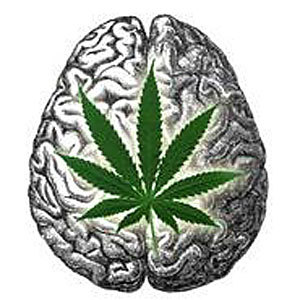For decades, most people have been led to believe that marijuana was solely used for recreational purposes, particularly by irresponsible teenagers with nothing better to do on a Saturday night. However, following a number of recent studies, it has been discovered that boredom is not the only thing that this little green plant has the ability to cure; In the case of Charlotte Figi, an eight-year-old girl from Colorado diagnosed with severe epilepsy, marijuana has played an enormous role in providing treatment that has not only changed the life of Charlotte herself, but her family’s lives as well.
Present in the marijuana plant are two primary compounds; the first being the better-known THC (Tetrahydrocannabinol), which is the compound responsible for producing the psychoactivity commonly associated with the drug. The second, cannibidiol, otherwise known as CBD, contains medical properties responsible for producing long-lasting analgesic effects, reducing inflammation, as well as aid in the treatment of arthritis, multiple sclerosis, and cancer. Cannabis oils highly concentrated in CBD can lead to revolutions in the medical world, as proven in Charlotte’s case. Given in small doses placed underneath the tongue, the oil helps aid in the reduction of stress and anxiety, ultimately reducing the amount of seizures.
In a recent study conducted by the University of California, researchers found that the cannabis oil not only aids in the treatment of epilepsy, but as well as a number of other neurological diseases such as autism; The study found that CBD regulates emotion and focus, acting as a neuroprotective against further brain degradation. In the autistic patient, mood can be regulated with oral doses of cannabis. The study also found that the oil was responsible for reducing hostility and rage in patients, ultimately inducing a relaxed, steady and calm demeanor.
While stories such as Charlotte’s are extremely uplifting and inspiring, they just go to show how the media only covers such stories that instill positive emotion. In class we learned about the file drawer problem, which explains how researchers in science often have a tendency to publish positive results but not negative or non-confirmatory results. There are a number of patients out there who have not benefited from medical cannabis, and in fact have demonstrated an increase in negative symptoms caused by their disease due to the cannabis treatment.
While our knowledge regarding medical marijuana continues to grow, breakthroughs in the medical world have already become apparent thanks to the tiny green plant. As we as a nation further educated ourselves on the benefits of marijuana, the hope of ultimately destroying its negative stigma continues to become more and more of a reality.
Sources:
“Autism Can Be Treated With Medical Marijuana” by Hans Benes http://guardianlv.com/2014/08/autism-can-be-treated-with-medical-marijuana
“Marijuana stops child’s severe seizures” by Saundra Young http://www.cnn.com/2013/08/07/health/charlotte-child-medical-marijuana


